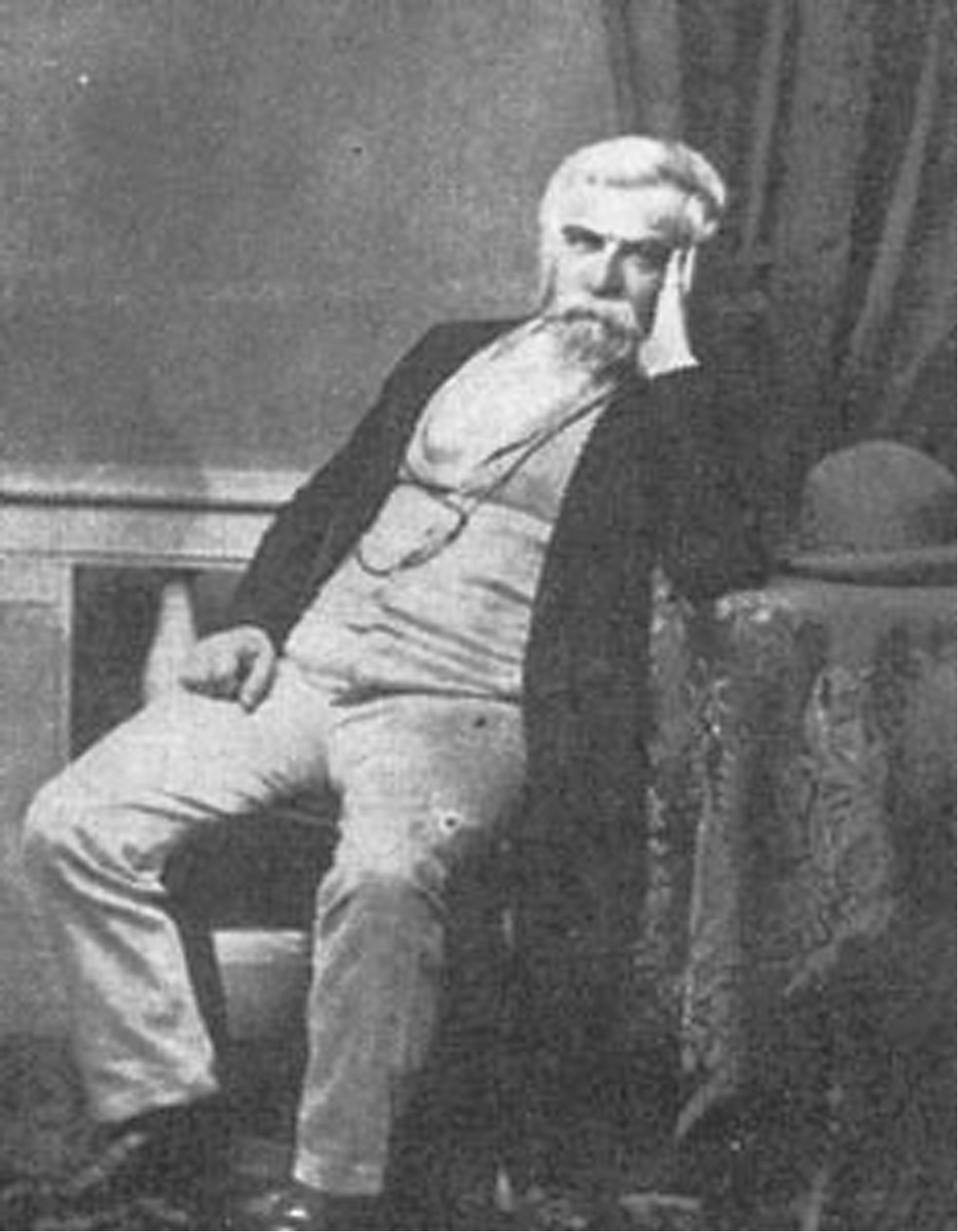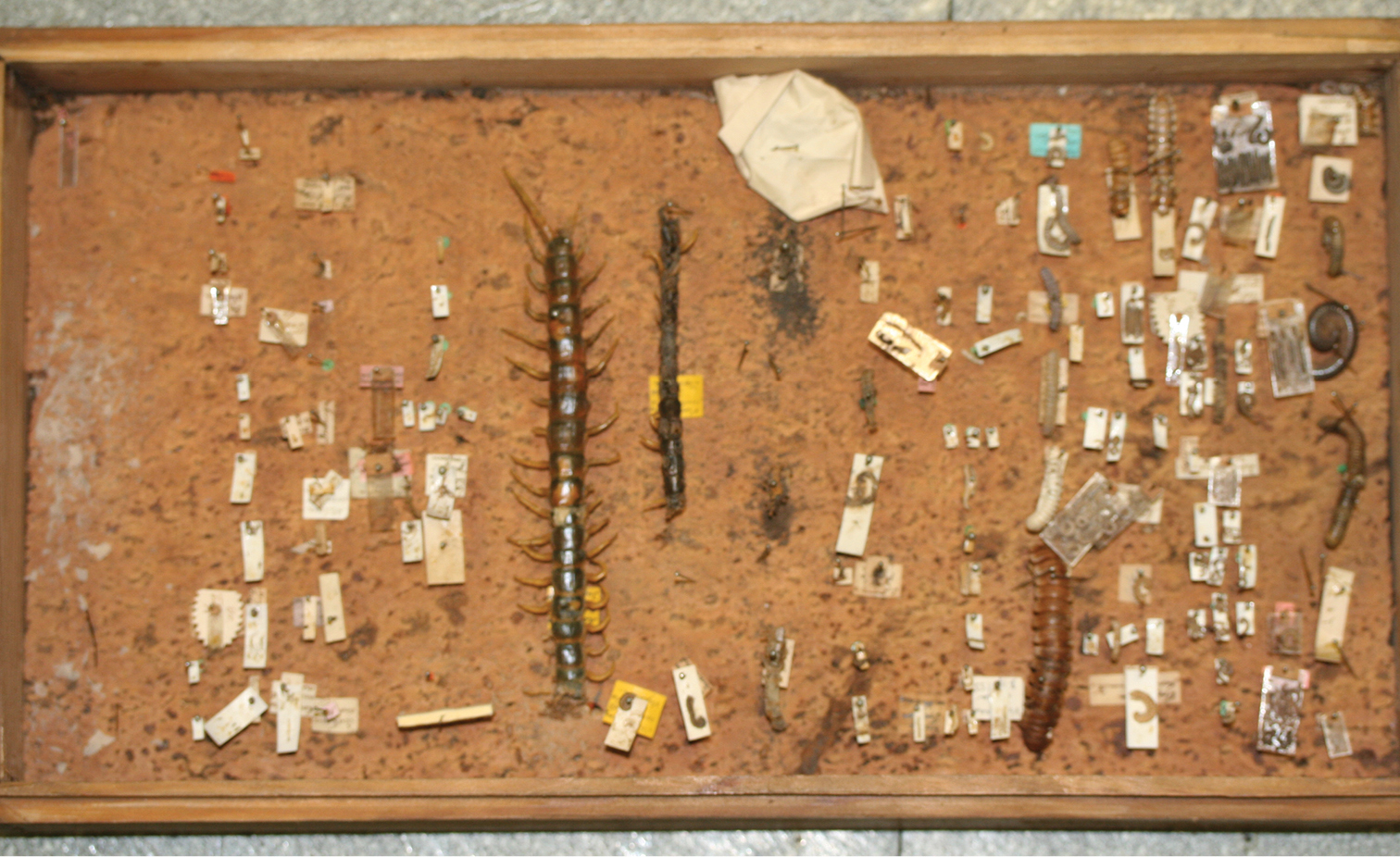






Citation: Golovatch S (2014) The myriapodological legacy of Victor Ivanovich Motschoulsky (1810–1871). ZooKeys 426: 11–16. doi: 10.3897/zookeys.426.8011
The little that remains of Motschoulsky’s myriapodological legacy in the collection of Moscow’s Zoological Museum proves to be of very limited value. Only one species of Diplopoda described by Motschoulsky, the Caucasian Hirudisoma roseum (Victor, 1839), is still in use, yet requiring a neotype designation, whereas the remaining few myriapod names he proposed are either nomina dubia or nomina nuda. The former include Scolopendra pentagramma Motschoulsky, 1866 (Chilopoda, Scolopendromorpha, Scolopendridae) and Strongylosoma carinulatum Motschoulsky, 1866 (Diplopoda, Polydesmida, Paradoxosomatidae), both from Japan, as well as Julus costulatus Motschoulsky, 1851 (Diplopoda, Callipodida, Schizopetalidae?), from Montenegro, because their type material is either inadequate or missing.
Myriapoda, taxonomy, Zoological Museum, Moscow, Russia
With the recent publication of V. I. Motschoulsky’s memoirs (
Portrait of Victor Ivanovich Motschoulsky.
Motschoulsky’s published contributions to myriapodology are very few, but even these have largely remained neglected. To my knowledge, no-one has ever attempted to revise any of Motschoulsky’s myriapod types.
The Moscow Museum collection of Myriapoda still contains Motschoulsky’s original wooden box full of dry pinned animals (Fig. 2)! There are a few dozen species of Diplopoda, many of which exotic (e.g. Andrognathidae, Platydesmida or Platyrhacidae, Polydesmida), and only a couple of larger Scolopendridae specimens. Much of the material is in poor condition, damaged by dermestid beetle larvae.
Picture showing Motschoulsky’s box with pinned dry Myriapoda (ZMUM collection).
Despite such a profound diversity, most of the diplopods are devoid of labels. Those which are labeled are either identified (e.g. “Polydesmus complanatus (L.)” or “Scolopendra spinula Brandt”) or bear provisional names marked as “mihi”. These latter specimens must be considered as nomina nuda. One such name has even been published: Julus melanocephalus Motschoulsky, 1851, said to be very common across Montenegro, even though specimens were clearly smaller near Cattaro (
The few samples of “Polyzonium germanicum Brandt” contained in the ZMUM box may well represent the material
Motschoulsky, sometimes under the pseudonym “Victor”, is known to have published only four valid myriapod species. The earliest is Leiosoma rosea (recte: -um) Victor, 1839, from eastern Georgia, Caucasus (
The second valid diplopod name proposed by
A careful search for type material has revealed two type series only: the holotype of Scolopendra pentagramma Motschoulsky, 1866 (ZMUM ρ7449) and 3 syntypes of Strongylosoma carinulata (recte: -tum) Motschoulsky, 1866 (ZMUM ρ2376), both species coming from unknown localities in Japan. As their original descriptions (
Similarly, all 3 syntypes of Strongylosoma carinulatum (one, lacking a few caudalmost segments, is still pinned, the remaining two have been located among the debris at the bottom of the ZMUM box) are later juvenile instars of a paradoxosomatid millipede, thus being absolutely inapt for revealing the species’ identity. In other words, both Scolopendra pentagramma Motschoulsky, 1866 and Strongylosoma carinulatum Motschoulsky, 1866 are also doomed to remain nomina dubia.
To summarize, the little that remains of Motschoulsky’s myriapodological legacy in the collection of the Moscow Museum proves to be of very limited value. However, even the negative result is a result. Only one species of Diplopoda described by Motschoulsky, the Caucasian Hirudisoma roseum (Victor, 1839), is still in use, yet requiring a neotype designation, whereas the remaining few myriapod names he proposed are either nomina dubia or nomina nuda.
I thank cordially Mrs Lyudmila P. Grozdilova and the remaining staff of the library of the Zoological Institute in St. Petersburg, Russia for the great help they rendered during my bibliographical research on V. I. Motschoulsky’s published legacy. Special thanks go to John G. E. Lewis (Taunton, Somerset, UK) for giving his opinion on the identity of one of the relevant types, to Pavel E. Stoev (Sofia, Bulgaria) for a valuable pre-publication review of the manuscript, to Alessandro Minelli (Padova, Italy) for solving a technical problem, as well as to Aleksandr Sysoev (ZMUM) for taking the picture of Motschoulsky’s collection of Myriapoda housed in ZMUM. The portrait of V. I. Motschoulsky is reproduced upon a kind permission of KMK Scientific Press, headed by K. G. Mikhailov (ZMUM).

